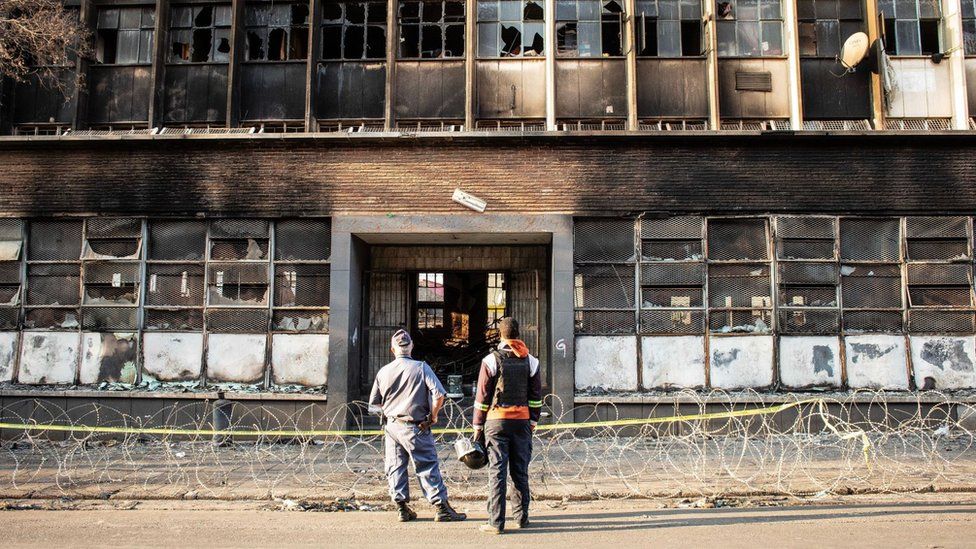-

-
-
Loading

Loading

A man who was initially thought to be a witness in South Africa's deadliest building fire case has unexpectedly admitted to starting the fire. The 29-year-old man, who cannot be identified, claimed that he unintentionally started the fire in the Usindiso building last August. He admitted to working for a violent drug dealer who collected rent from residents and said that the fire started after he used fuel to set fire to the body of a man he had strangled while under the influence of drugs. The man has been arrested and is now facing charges of arson, 77 counts of murder, and 120 counts of attempted murder. The fire in the Usindiso building has drawn attention to the severe housing crisis in Johannesburg, known as the city of gold and Africa's wealthiest city. Many people in the city live in deplorable conditions, lacking basic services such as water and electricity, and residing in unsafe buildings. The fire left more than 500 people homeless, most of whom are among the poorest in South African society. In the aftermath of the fire, South African President Cyril Ramaphosa expressed his sympathy for those affected and pledged to restore their well-being. However, five months later, many survivors are still suffering. The government has relocated some families to a newly built camp of metal shacks, but the conditions there are dire, with no access to water or power, and frequent flooding. The residents are calling for proper housing, stating that the shacks are too dangerous. The situation in Johannesburg reflects a wider crisis of affordable inner-city rental properties. Many buildings in the city have been abandoned or neglected by their owners, leaving them without basic services or safety measures. The law entitles evicted individuals to emergency temporary accommodation, but due to the lack of affordable housing, this option is rarely offered. The camp of metal shacks currently provided by the authorities is seen as temporary, but its residents are uncertain about how long they will have to stay there. There are an estimated 15,000 homeless people in Johannesburg, prompting the city authorities to investigate and pursue court cases to evict residents from the so-called "bad buildings." Amidst the struggle for decent housing, the courtrooms have become a battleground. After the Usindiso building fire, many people were relocated to shelters, while some foreign nationals refused to be relocated due to deportation fears. Human rights groups obtained a court order to prevent their deportation as they are witnesses in the ongoing public inquiry. The dire condition of Johannesburg's neglected buildings is evident in properties like Vannin Court, which has been without basic services for a long time and is falling into disrepair. Residents feel abandoned and say that the lack of security and deteriorating infrastructure poses constant danger. Despite high-profile police raids and promises of redevelopment, little has been done to address the situation. The public inquiry into the Usindiso building fire has exposed the widespread lack of safety and security measures for the poorest members of society. Fire safety experts have highlighted that this problem extends beyond a single building and is prevalent in many similar structures in South Africa. The reckoning for these neglected buildings has only just begun, and the suffering they house cannot be contained.